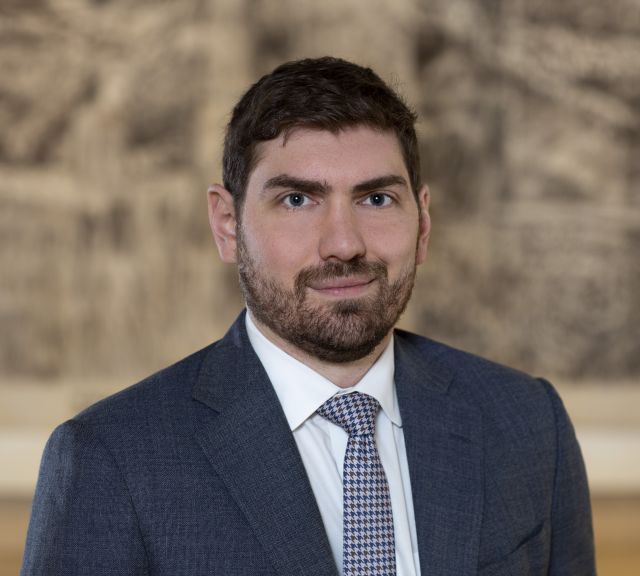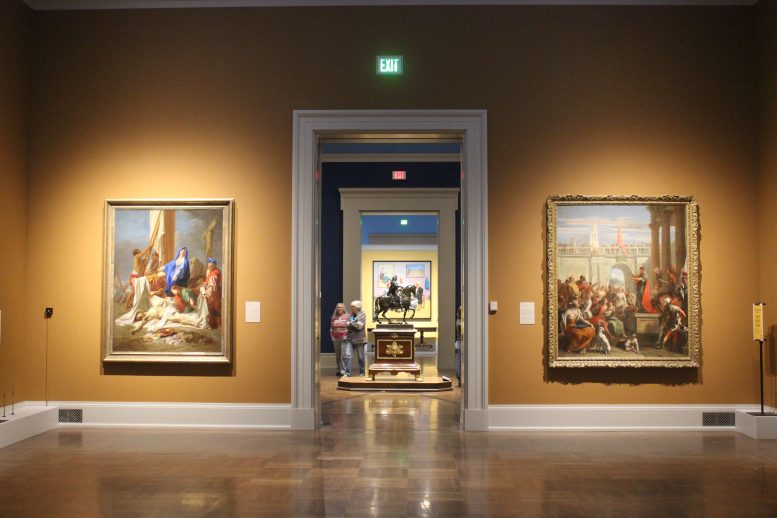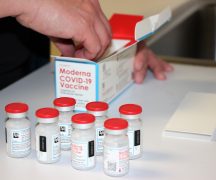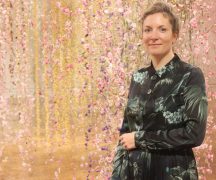By DAVID DUPONT
BG Independent News
As of Wednesday, the Toledo Museum of Art like other Ohio museums, will cleared to open its doors and welcome the public to visit.
While the institution has yet to formally announce its opening, Adam Levine said the museum will be ready. “We’ve been diligently at work on that and to open this month if allowed to do so.”

Speaking early last week, he reflected on the changes.
“A lot of people are focusing the pragmatics, the practicalities of the visitor’s experience.”
That includes having ample hand sanitizer and arranging for timed admission. Everything will be compliant with the guidelines set forth by the state of Ohio and the Occupational Safety and Health Administration. The museum has gone a step beyond by enlisting the services of an infectious disease expert from ProMedica and an industrial hygienist to review its plans.
“We’re not just interested in being compliant,” Levine said. “We’re interested in making sure we leave no stone unturned.”
The visit, he said, will be different “because that’s the nature of art.”
People will be seeing these works of art through the lens of the last few months. “We’ve been through this shared experience and shared trauma, and we’ll see the work of art differently. … We can’t understate the profundity of the experience people will have reading their new quarantine COVID-19 experience into the works of art when they return.”
Of course, there will be the logistics of the way they move through the galleries and the masks and other protective equipment. But, Levine said, “the meaningful part of the visit is the art.”
Levine, 33, was appointed as the Edward Drummond and Florence Scott Libbey director, in January and took over at the museum on May 1, the beginning of what he hopes is a long tenure in Toledo.
His arrival was overshadowed by the pandemic. “It’s definitely not the moment I anticipated,” he said.
Levine is no stranger to the museum. He came here in January 2013 as a Mellon Fellow, and then joined the leadership team as a curator of ancient art, director of visitor services, and associate director.
He left in late 2018 to become the director and chief executive officer at the Cummer Museum of Art & Gardens in Jacksonville, Florida. He came there in the wake of another disaster. In 2017 Hurricane Irma destroyed the museum’s historic gardens
Levine returns to the TMA to take over from Brian Kennedy, who left at the end of June 2019 to take the helm at the Peabody-Essex Museum in Salem, Massachusetts. Kennedy had been director since 2010. (John Stanley served as interim director for a year.)
Coming to Toledo after earning his doctorate in the history of art at Oxford University, where he was a Rhodes scholar, reunited Levine with Kennedy.
Kennedy was the director of the Hood Museum at Dartmouth College where Levine earned his bachelor’s degree studying art history, social science, anthropology, and mathematics.
Levine was a work-study student in the museum, and Kennedy served as a mentor. “Brian was very gracious and found time for me and helped cultivate my interest in museums.”
Those varied interests came together when he co-founded Art Research Technologies, a data and research company, which was sold in 2017.
Growing up in New York City, he remembers visiting museums – the Metropolitan Museum of Arts, the Museum of National History, the Guggenheim – on rainy weekends.
That embedded in him a love of art, and, he said, he was fortunate to attend a high school that had classes in art history. That primed him to continue that passion at Dartmouth.
Levine returned to Toledo because he both loves the museum, and the city. His fiancée, Brooke, he said, grew up in Perrysburg.
“It’s an amazing community, terrific people,” Levine said. “I was excited to come back and have the opportunity to live here and have family here.”
The Toledo Museum, nearing its 120th birthday, “is one of great museums of North America.” He added: “Yet there’s still such potential. I was especially excited about the capacity to expand the offerings of the museum, to further invest in what’s already a really great program and take the institution to the next level. To take it from being a great museum in America to one of the great museums of the world.”
In doing that, the museum will not lose sight of its place in the community, and its neighborhood, which he defines not just as the West End but the neighborhoods on the other side of I-75. That was the museum’s neighborhood before the highway cut through the area.
The museum is engaged in developing a strategic plan. The museum didn’t hire a consultant, he said. Instead it is driven by the input of the its staff, its core supporters, and the broader community.
It’s about more than collecting great art.
“We’re doing significant national and international things that resonate meaningfully and authentically with our neighbors’ experience. That’s a real opportunity for the Toledo Museum of Art.”
Anyone who claims to know how the pandemic will affect this is being “disingenuous.”
Levine said rather than trying to predict what will happen, he finds it more worthwhile to look back at how museums, including the TMA, have weathered other instances of turmoil and pestilence, whether it was the plague or the Spanish Flu in the early part of the 20th century.
“The museum is a magical experience,” Levine said. “It’s not just being in front of that work of art, but in a space that is so carefully crafted to create a feeling as you look at a work of art. I don’t see that going away. Humans are resilience, and humans will return to their norms as quickly as they can.”





